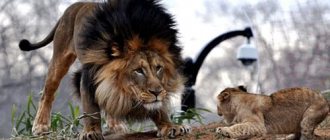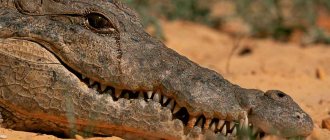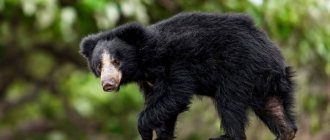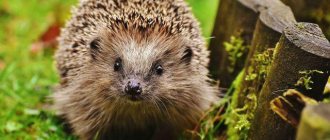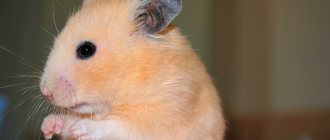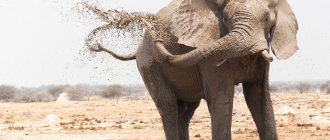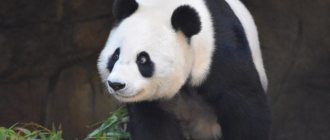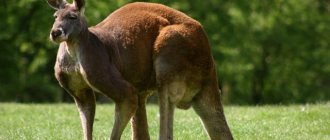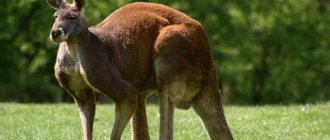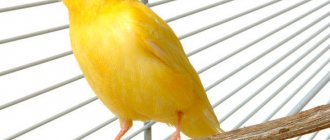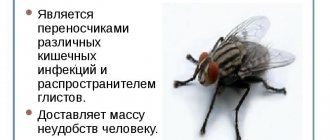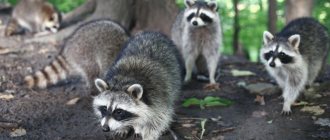Lions have been idolized since ancient times, endowing them with different characteristics. First of all, their strength and ferocity were valued, they were revered as invincible fighters. In the same Ancient Egypt, the image of a lion on flags, coats of arms and emblems symbolized the power of the pharaohs. It is known that these animals never attack without reason unless there is a threat to their life. However, the king of beasts can be aggressive, defending his right to prey, a female, or pride territory.
Prides
Pride is a family group. Leos prefer group life and are rarely alone. The group size of these predators is not always the same. It ranges from four to forty individuals. Of the entire cat family, only lions live and hunt in groups. A pride of lions usually includes several females with cubs, young males and only one leader. Moreover, the head of the pack is not always the strongest or largest male. But the entire pride of lions recognizes his authority and obeys him. Sometimes the leader kicks young males out of the group. They can later join another group or create their own pride.
How does the life of a pride of lions work?
These animals are very sociable, and often a group can reach a size of forty individuals. The basis of any such team are lionesses. They raise their offspring under the protection of the entire pride. What is noteworthy is that lion cubs can suck milk not only from their mother, but also from any other female who has recently given birth to cubs. Lionesses raise their offspring together and do not divide the cubs into their own and those of others.
All members of the pride are very attached to each other and often show tender feelings, which are expressed in licking each other or rubbing their cheeks when they meet. As in any family, there are some small skirmishes, but they are mainly due to the division of spoils.
Curious facts about lions
In anthills and termite mounds, humidity and temperature are always kept at a certain optimal level.
In artificially isolated individuals:
- metabolic level changes noticeably,
- reserve substances are consumed faster,
- a number of instincts do not manifest themselves,
- general vitality deteriorates.
The group effect is understood as the optimization of physiological processes leading to an increase in the viability of individuals when they coexist. The group effect manifests itself as the reaction of an individual to the presence of other individuals of its species. In this case, the intensity of respiration decreases, the rate of growth and development increases (the work of Schwartz and Piastolova), and resistance even to toxicants increases.
A classification based on the quantitative representation of a particular group of individuals is widely used.
Examples of group living.
Family. A family lifestyle dramatically strengthens the bonds between parents and their offspring. At the same time, the territorial behavior of animals is most clearly expressed. Several types of family groups can be distinguished. In paternal families, the male takes care of the offspring (Amur sleeper guards the clutch). The most common type is maternal families. There are plenty of examples of this kind. In many birds, the female guards the clutch and feeds the offspring. In mixed-type families, both parents take part in protecting and feeding the young. These are, for example, some species of birds (swallows, swans, etc.).
A colony is a group settlement of sedentary species. Colonial settlement represents a combination of solitary and group lifestyle features. A colony can exist for a long time (rodents) or appear only during the breeding season (corvids). The term “colony” itself is used in a very broad sense, as applied to reproductive groups of the most varied nature. A colony of sea acorns, in which the relationships between individuals are reduced to chemical secretions, and colonies of other invertebrates that reproduce asexually (sponges, polyps, bryozoans, corals, etc.) can be considered as colonies. Such colonies in many cases essentially represent the offspring of one individual (clone).
A much more complex form of colony is a settlement of animals in which their individual vital functions are performed together. Such functions include protection from enemies and warning alarms. For example, in a dense colony of eider Somateria mollissima, located openly, gulls destroyed 4 times more nests than in a less dense colony. Thus, living in a colony increases the likelihood of individual survival. In addition, in many colonies collective care for offspring is possible. A textbook example of this kind is the formation of “nurseries” in penguins. They represent temporary or more permanent associations of chicks from several broods. In penguins of the genus Aptenodytes, chicks form aggregations on their own initiative. It is believed that the main incentive for this is worsening weather conditions, since heat loss in the group decreases.
A flock is a temporary association of animals of the same species, connected by a common habitat or breeding area. Schooling ensures the performance of any functions in the life of the species, for example, protection from enemies, prey, migration. Based on the method of coordinating actions, flocks are divided into two types:
- without a clear leader (flock of equipotential type). Individuals in a school are similar in their individual properties and are practically equivalent in fish.
- with leaders on whom other individuals are guided. In this case, the structure of relationships is built on the basis of the morphofunctional heterogeneity of individuals.
This system of relationships is most typical of moving mammals, but in a simplified form it is also found in some birds. In mammals, packs are known for predatory animals - wolves, hyenas, wild dogs, coyotes, etc.
Pride. This is a stable group of Panthera leo lions with relatively stabilized numbers. The unity of the group is largely based on the unity of the common territory, which can reach 90 km."
Prides include mainly from 4 to 15 adult animals, in total this number can reach 37 individuals. A typical pride consists of 2 males and 7 females. The hierarchy in it is not very strictly expressed. There are no competitive relations between females. The formation of a pride occurs when nomadic young males from one pride meet and a group of unrelated females comes from another pride. This prevents inbreeding.
A herd is a group of animals of the same species living in a certain territory or water area. From an ecological point of view, a herd and a flock are approximately the same thing. There is a clearly defined hierarchy in the herd. In most cases, the most experienced adult animals find themselves in the leadership position. The biological significance of leadership is that the individual experience of individual animals becomes the property of the entire herd. This increases the level of adaptability of its actions, and, accordingly, survival. In addition, there are herds with leaders. The leader, unlike the leader, actively directs the activity of the herd through special signaling, and sometimes using direct aggression. These individuals perform a number of functions of general herd significance and act as dominants in their group of animals. Herds of this kind are most characteristic of primates, but are also found in some species of ungulates, large predatory mammals, and, in a simplified form, in some gallinaceans and cetaceans.
Flocks and herds lead mainly a nomadic lifestyle, i.e. are constantly on the move. The distance between individuals in such groups when they can interact with each other without violating certain individual boundaries is called herd distance.
Social buttons for Joomla
Power in prides
Any pride of lions, a photo of which can be seen in this article, has only one leader, who has all the power. This is an adult male that dominates the pack. He has the right to be the first to mate with the lionesses and begin to eat the prey. But the leader also has his own responsibilities - to look after the cubs while their mothers are hunting, to protect the flock from strangers and any dangers.
A pride of lions usually contains no more than three adult males, since young predators, growing up, can begin to challenge dominance. If they lose, they are expelled from the pride. For some time they lead a solitary life, and then create their own family group or join another pack.
Features and habitat
Among the cats, only the tiger, whose size is not inferior to the king’s, can compete with the lion. The weight of the animal reaches 200-250 kg, the length of the body of an adult animal is almost 2.5 m, to which is added about a meter of tail with a black hair tassel. Inside there is a “spur” of terminal vertebrae, an additional weapon of the predator. Large dimensions do not prevent the animal from being agile and fast.
Males are distinguished by a mane that grows from the age of 2 and covers the body from neck to chest. The color of the mane darkens as the animal ages, adding even more significance. It is generally accepted that such a dense and elastic woolen mop softens the blows of opponents in fights.
The photo shows a male lion
The length of the mane hair reaches 40 cm. Its density, shape and color depend on many factors: age, habitat, subspecies, climate, living conditions. In captivity, the mane of lions is always more luxuriant, since it does not have to be ruffled in thickets or duels.
The production of testosterone has a great influence on the formation of a mop of wool, so among lions the leader status is always with the owner of an outstanding mane. Lionesses are smaller in size, their weight is up to 140 kg, but they are more graceful than their partners, since they are the main hunters of the clan. The majestic mane and massive dimensions would interfere with tracking down prey.
The photo shows a lioness
The head of the beast is large, with an elongated muzzle and large jaws. Fangs up to 8 cm long will allow hunters to attack large animals. The body is muscular, the paws are strong, with retracted claws on the toes. The short hair on the body can be colored from whitish-gray to yellow-brown.
The main relatives of the lion in nature: jaguar, tiger and leopard - animals of Africa . Their existence is confirmed by fossil remains, the age of which is estimated to be up to 1 million years.
Once upon a time, in ancient times, the habitat of lions was much larger than now: it covered the entire territory of Africa, the Middle East, southern Europe, the south of what is now Russia, and the northwestern part of India.
The persecution of the animal by humans and the reduction of its habitat have become disastrous for the predator. It remains in nature only in sub-Saharan Africa and the Gir forest of the Indian state.
Of the 12 subspecies that existed, six have survived in modern times. Among the extinct subspecies is the famous Barbary lion , the largest wild animal of its relatives. The weight of the giants exceeded 300 kg, and the body length was over 3 m. The last representative of the species was exterminated in 1922.
The white lion is not identified as an independent subspecies of the animal. The cream color of the fine coat is the result of genetic characteristics. South African captive breeders raise these lions to order for trophy purposes.
In the photo there is a white lion
Savannas are the favorite habitats of lions, but sometimes they move to forests or areas overgrown with bushes. Animals need large bodies of water and ungulate mammals - their main hunting objects.
How do lions hunt?
Lions hunt in groups, pursuing one chosen victim together. They can develop high speed only over short distances. They prefer to stalk prey and get as close to it as possible. Moreover, it is mainly females who hunt. This is explained by the fact that lionesses are less noticeable than males and are more agile, so the likelihood of catching prey increases several times.
Often females surround the herd from different sides and pounce on the nearest animal. Lionesses try to attack with one powerful leap, breaking cervical vertebrae with their jaws or strangling the victim. For small animals, one fatal blow with a paw is enough. Females provide food for the entire pride of lions, so their main prey is large ungulates (buffalos, zebras, antelopes, etc.). Males usually do not take part in the hunt, except in rare cases when a very large prey is caught. Often lions prefer to remove sick and weak animals or cubs from the herd. Such prey is easier to handle and hunting does not take much effort and time.
Tourists instead of police
In the 1960s, Kenya was home to an estimated 20,000 black rhinos, but just two decades of poaching have reduced the population to fewer than 300 animals. By 2022, there will be 1,739 of them, including white rhinoceroses, but to prevent species extinction, the number needs to be increased to 2,000 individuals. Most rhinos live on the Laikipia Plateau. Only a couple of dozen rhinoceroses live in the popular Maasai Mara reserve, and patrols are assigned to each animal. Rangers monitor the lives of rhinos every day, keep records and write reports. The life of animals has never been so public, researchers know everything about each of them - what they prefer, how they sleep, how they carry their pregnancies, with whom they are friends. Stories are told in detail to tourists. One of the most popular is about a female named Mary who loved to graze with a herd of buffalo, fell unrequitedly in love, ran away from unrequited love to the other end of the park, where she met the father of her six children.
Another story is about the famous lion, nicknamed Scarface, who ruled several prides and became the subject of many wildlife documentaries.
Giraffes have decreased by 40% over the past three decades. (Photo: Olga Rastegaeva·DR)
The Masai Mara Game Reserve is still one of the best safari destinations on the planet. Here you can easily see the big African five - leopard, lion, buffalo, elephant and rhinoceros. And, of course, the great migration of wildebeest, coming from the Serengeti to the Masai Mara in search of food from July to October. For this spectacle, 200,000 wildlife enthusiasts travel to the Great Rift Valley every year. The total number of wild animals in the Masai Mara reaches 40,000 individuals. The gloomy statistics here seem fictitious. Looking from an SUV at herds of antelopes and gazelles grazing on the plain, peacefully sleeping lions, giraffes eating the crowns of trees, elephants slowly going about their business, it’s hard to believe that something is threatening them.
Material on the topic
But the tourist’s eye does not notice the details that worry the authorities. The pandemic has brought new problems: the crisis in the tourism industry has led to a doubling of poaching of “wild animal meat” - zebras and giraffes. Poaching has also penetrated the territory of the country's most popular parks. Villagers who have lost their jobs in tourism lack money and have started selling their livestock and hunting. The pandemic has all but derailed efforts to combat poaching. After all, hundreds of tourists viewing the bush scared off criminals. That is why the Kenyan authorities hastened to open the country to tourists.
During the pandemic lull, elephants experienced a baby boom. (Photo: Olga Rastegaeva·DR)
Mating season for lions
A lion courting a female is very attentive to her. The mating season begins with the lioness's heat. Until the female becomes pregnant, this period is repeated every 3 weeks. The resulting pair leaves the pride of lions for about five days to a week, going to a secluded place. At this time they are inseparable and are close all the time. Sometimes the “honeymoon” lasts even more than two weeks.
Mating occurs several times a day. A lion can copulate 70 times in 24 hours. The recovery period between matings averages twenty minutes. Usually everything happens quietly and quickly, except for cases when the male begins to growl in ecstasy and pats the lioness by the scruff of the neck. At this time, the lion can sometimes miscalculate his bite force and, in a moment of passion, accidentally kill his girlfriend.
Reproduction. Caring for offspring.
Lions breed throughout the year, but peak during the rainy season. In a non-pregnant female, estrus begins 16 days after the end of the previous one. At this time, the lion begins to court her. The pair leaves the pride for 4–5 days to mate (which at this time occurs on average every 25 minutes), remaining, however, in its hunting territory. Not only males, but also females are polygamous; usually mating occurs both with the dominant male and with other lions from the pride. Males of a pride usually do not fight for females; the lioness leaves with the first one who meets her. On average, every fifth heat cycle ends in pregnancy.
If a lioness becomes pregnant, then after 3.5 months, shortly before giving birth, she again leaves the pride. She finds a shady, inconspicuous place and there the offspring are born - from 1 to 6, on average, three lion cubs. At first they are looked after by their mother, and after returning to the pride, all lionesses are equally affectionate with the cubs and do not distinguish between their own and others. In a pride, lion cubs are born synchronously, which gives them an advantage: mutual feeding and collective defense are known to significantly reduce cub mortality. The role of the lion in caring for the offspring is primarily to protect the pride from wandering male lions. He can also make sure that when dividing the prey, the lion cubs get their portion. But females protect lion cubs from predators. Lion cubs aged 5–7 months are at greatest risk. They remain alone for a long time and can become prey to hyenas and other predators. In addition, sometimes the mother herself attacks weak lion cubs, which are not yet able to follow the pride in due time. Mortality in the first six months of life of lion cubs reaches 50%.
If the cubs survive, their mother will next give birth in about two years, but if they all died (usually due to the capture of the pride), then estrus will begin a very short time after their death.
Newborn lion cubs weigh only 1–2 kg. On the 11th day they open their eyes, and on the 15th they begin to walk. There are dark spots on the skin of small lion cubs (up to 3 months), which then disappear. For the first two months of life, they feed only on milk, but at this age they, together with their mother, return to the pride and, in addition to milk (and all lactating lionesses feed them along with their mother), they gradually become accustomed to meat. At the age of 7 months (up to 10) they switch completely to eating meat. Soon they begin to accompany adult lions while hunting, and from 11 months they can already kill prey on their own. However, independent life is still a long way off: a lion cub has a chance of surviving alone starting at 16 months, but usually does not leave the pride until the age of two or even four. Young females generally remain in the pride.
Males and females reach sexual maturity on average at 5 years and 4 years, respectively. But even after this, they continue to grow in size - usually up to six years.
Lionesses live longer, since old lions are usually driven out either by the pride or by another, stronger male. In nature, they live on average 14–16 years (up to 18 years in the Serengeti), and males rarely reach 11 years, but you can also find an older lion (up to 16 years). The average life expectancy of lions in captivity is 13 years, the record is 30.
Pride territory
The territory in which a group of any animals lives is almost always marked by them. Lions do the same. A pride of lions sprays the borders of its territory with secretions from the anal glands, accompanying this action with a loud roar. This is done to protect the females of the pack and to legitimize the area in which they will hunt. But, nevertheless, lions do not patrol established borders very vigilantly.
If there is little prey in the territory, then the pride’s possessions can be expanded to 15 km in all directions. And vice versa, if there is enough food for the flock in a smaller area, then the boundaries are reduced. Young males can only conquer pride territory by force. And lionesses will not allow a strange female into their flock if she tries to join their group.
